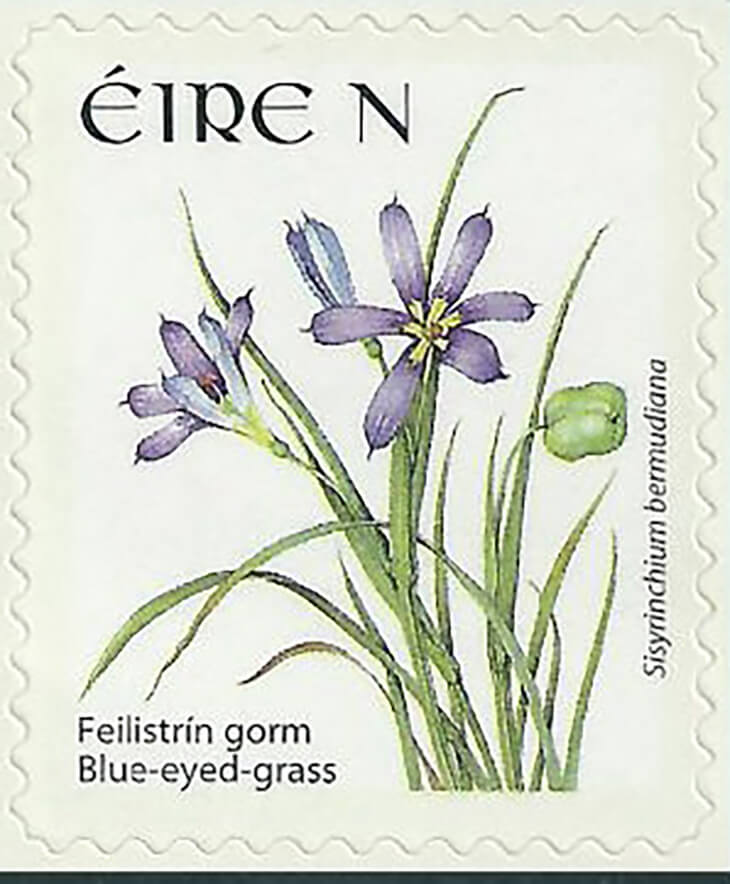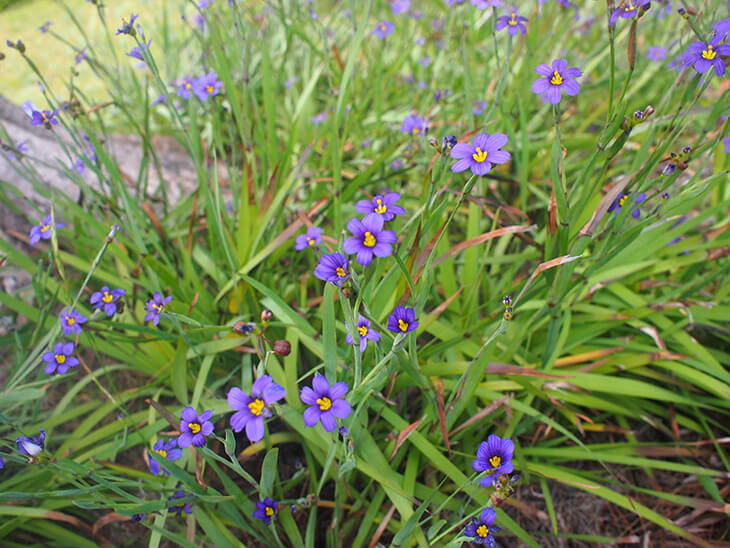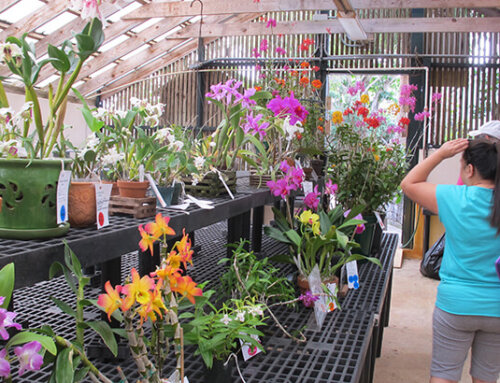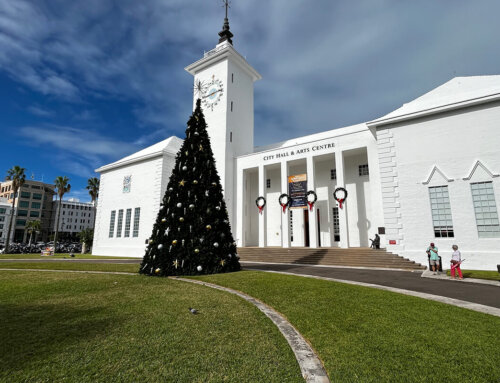Do You Know… About Bermuda’s National Flower and Ireland’s National Rate Postage Stamp? by Horst Augustinovic
Sisyrinchium bermudiana is a member of the Iris Family with a distinct purple flower with a bright yellow centre. It prefers moist soils which provide good drainage and is therefore often found on damp, sandy soils and rocky shorelines.
Although short-lived, the flowers must regularly self-pollinate since it generally seeds very freely. In good growing conditions Sisyrinchium bermudiana can become abundant, spreading in an invasive weedy manner. Seed probably persists in the soil seed bank, however, the plant often possesses a short underground stem which provides food storage over the winter period.
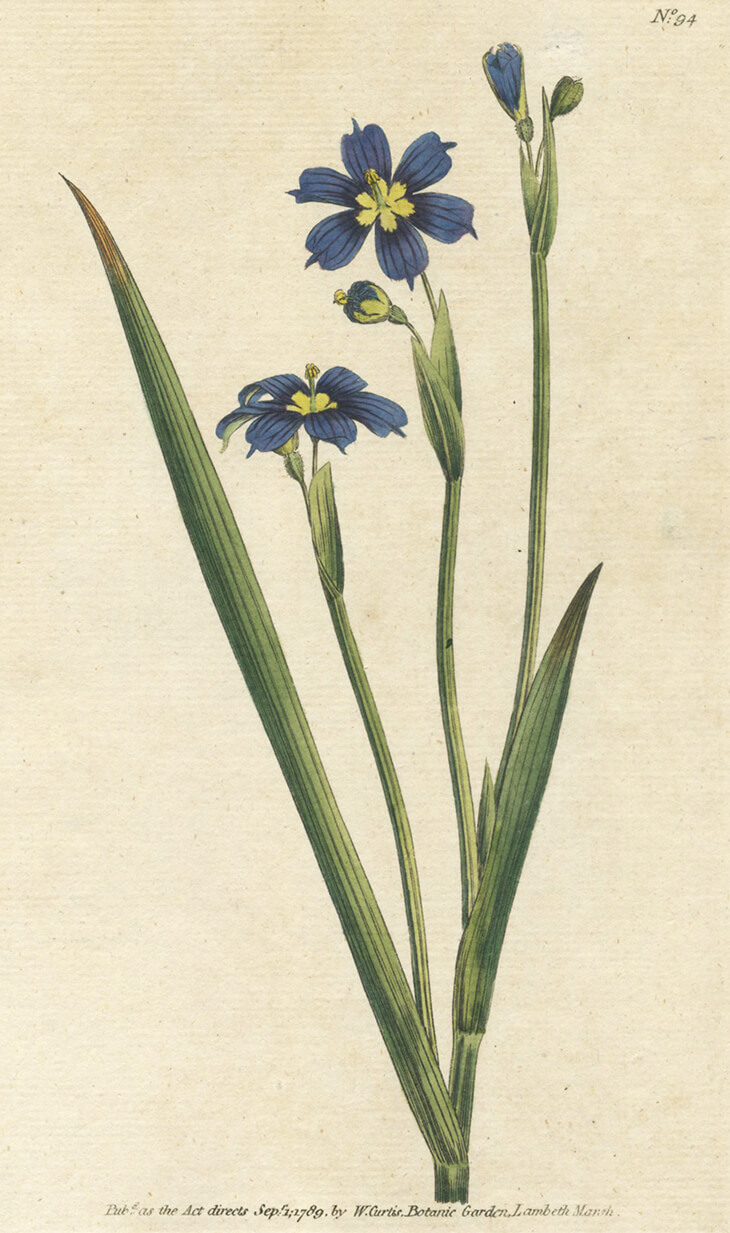
A hand-coloured engraving from the 1780 William Curtis Botanical Magazine.
In 1916 the botanical magazine Addisonia described the Bermudiana flower as follows: “The stem is rather slender, ten to twenty inches high, smooth, flattened and winged, usually branched. … The leaves are linear, smooth, one sixth of an inch to nearly half an inch wide. In dry sunny places, very abundant in Bermuda, and the most characteristic herbaceous plant of those islands, where it is endemic, flowering in spring. … The oldest known specimen of this beautiful and interesting plant is one collected by J. Dickenson about 1699, preserved in the Sloan herbarium at the British Museum of Natural History.
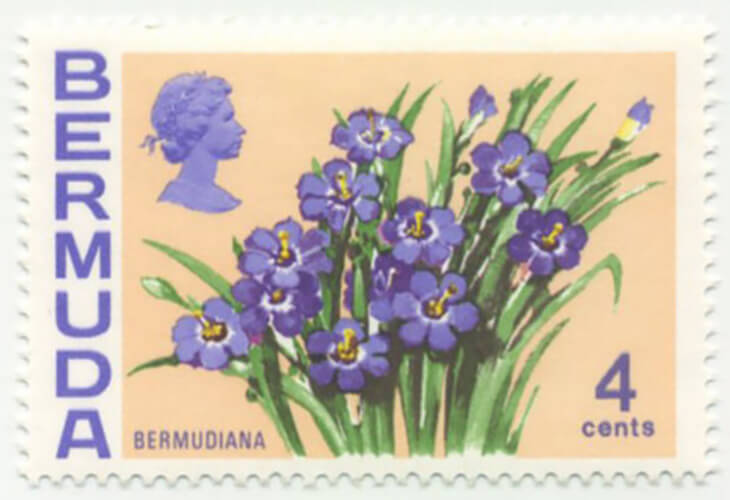
A 4¢ Bermuda stamp issued on 6 July 1970.
Sisyrinchium bermudiana was given its scientific name when botanists quite wrongly believed that the flower was confined to Bermuda. That changed in 1845 when identical flowers were discovered in western Ireland in sites around Lough Erne and Lough Melvin in County Fermanagh. It is interesting that both Bermuda and Ireland have issued postage stamps of Sisyrinchium bermudiana.
